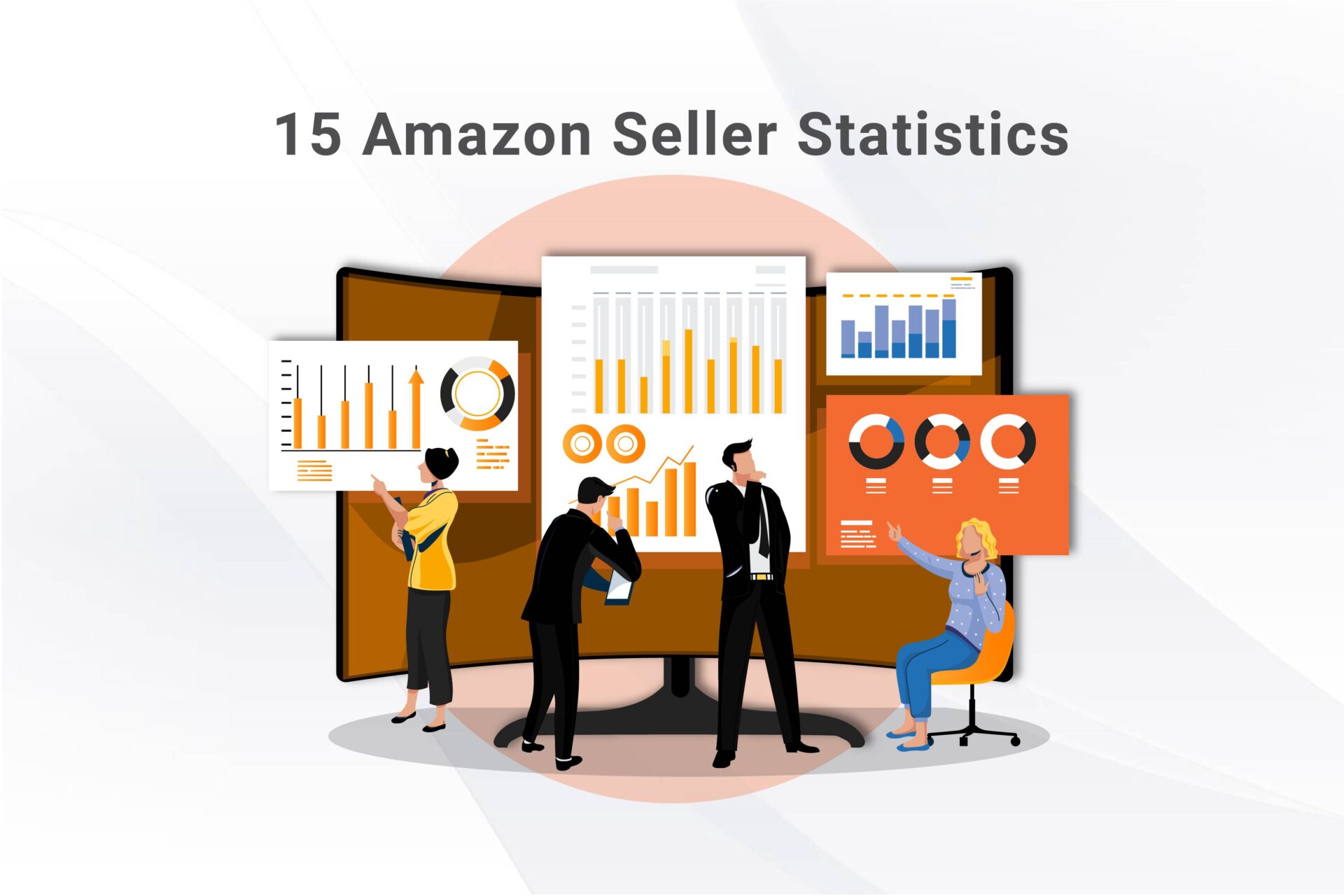
15 Amazon Seller Statistics You Need to Know
Introduction
As cliche as it may sound, knowledge is, indeed, power! Equipping yourself with a thorough knowledge of the market you want to excel in is pivotal to your success. Therefore, we have brought you 15 critical Amazon seller statistics that can help you garner better results in terms of your revenue.
You can use these Amazon seller statistics to gain a competitive advantage over other market players. Curious to find out what these top 15 Amazon seller statistics for 2022 were? Let’s jump right in!
1. Amazon Yearly Revenue
Amazon sales figures have shown continuous growth on a year-to-year basis. The annual net sales revenue of Amazon grew from USD 368.06 billion to USD 469.82 billion, recording a massive increase of USD 101.76 billion.

This stat shows that the marketplace is far from saturation or obsolescence. Do you know what that means? It means that hope is alive for the new entrants.
2. Amazon USA Market Analysis
According to Statista, based on the numbers of 2016 and 2017, the projected market share of Amazon for 2021 in the USA’s e-commerce was increased by 50%.
When this data was compiled, Amazon already enjoyed a massive 37% share in the market, which has only increased since then.

Amazon enjoys being the top choice of Americans, attracting around 2.8 billion monthly visitors to the site.
3. Number of Prime Members
Interestingly, there are more prime members than there are non-prime members. Amazon seller statistics estimate the number of prime members at around 100 million.
In America alone, one in three people holds a prime membership, and this ratio can only be expected to grow in the future, given the current market trends.
4. Spendings of Prime Members
Generally, a prime member spends USD 1,000 a year compared to a non-prime member who typically spends between USD 100 and 500 a year on Amazon. It provides a compelling reason to make your products prime-eligible.
5. Generation wise Audience
Millennials often get into a lot of fights with Gen Zs and Baby Boomers. However, this fight is the one that they win like no other.
Millennials are the most frequent buyers on Amazon. Perhaps this is because they have knowledge of technology and money to spend. Using Amazon as a shopping tool, Millennials outpace the baby boomers by a ratio of two to one.
6. Amazon’s Impact on Traditional Marketplaces
Amazon is rapidly replacing the need for physical shops. Consumer behavior is rapidly shifting, and more people tend to shop from the comfort of their homes.
Take the home improvement industry, for instance. Amazon product statistics show that the website offers around 1.1 million items to choose from, which has caused a massive shift in people’s preferences.
7. Checking Prices on Amazon
Even those who do not tend to buy online visit Amazon to survey the market before going out to get what they need. 9 out of 10 people use Amazon to check prices. It saves them the trouble of doing a market survey physically.
8. Prime Day is the most Profitable!
It is not Cyber Monday or Black Friday that brings in the most incredible sales hikes. Instead, it is Prime Day, on which many users sign up for prime membership and make significant purchases.
Therefore, keeping your best deals for Prime Day instead of any other event is a better business strategy.
9. Alexa as an Instant Buying Tool?
Alexa is not yet the instant buying tool that Amazon wants it to be. Since its introduction in 2015, around 50 million Amazon Echos have been sold.
Although people use Alexa to track their orders, merely 2% of users place new orders. It indicates that people still prefer looking at and reading about the product they want to buy.
10. Alexa has Got Potential!
Despite bringing very few Amazon online orders, Alexa’s future is still promising. It has over 30,000 skills and can integrate with over 4,000 home devices. The rate of improvement in its technology is very rapid.
11. Per Hour, Per Minute and Per Second Sales Counts
Amazon’s hourly revenue comes close to an average of USD 17 million. Its sales each minute average around USD 283,000, while its per-second sales record an average of USD 4,722. It should put the quantum of Amazon’s market share in perspective.
12. What Happens When Amazon goes Down?
If Amazon’s website goes down even for a few minutes, the losses can be hundreds of thousands. In August of 2013, one such incident happened.
The website went down for about 40 minutes. It cost them around USD 5 million in lost revenue in such a short period.
13. Branching out on Other E-markets
Diversification in business is almost always a good strategy. Therefore, around 80% of the sellers use other platforms alongside Amazon. It helps them reach more people and broaden their customer base.
Meanwhile, it also hedges them against the risk of losing their place on Amazon due to account suspension, website crashes, etc.
14. Rising Number of Digital Buyers
As technology keeps evolving and continues to become better and better every day, consumer behavior keeps shifting accordingly. In 2016, the number of online buyers was estimated at around 1.66 billion.
In 2021, this number grew to 2.14 billion. It goes on to show that e-commerce is the future of the global economy.
15. Increasing Number of Sellers
As the demand continues to grow rapidly and steadily, so does the supply. In 2018, the number of online sellers was estimated at 200,000 globally. In only one year, this number witnessed a growth of 12% and grew up to around 225,000 sellers.
This number would continue to grow at a fast pace to match the growing number of online buyers.
Final Thoughts
A better understanding of the marketplace you are using to sell your goods and services means a better business strategy. One of the best ways to keep yourself updated about Amazon is to keep looking out for the key Amazon seller statistics.
So, we have compiled this list in hopes of serving that very purpose. We hope it helped you develop better insights into the world of Amazon and take your business to a new height.
FAQ’s
Understanding metrics like conversion rates, sales velocity, and customer reviews can significantly impact an Amazon seller’s success.
Sales velocity indicates how quickly a product is selling. It’s vital for sellers to track this to optimize inventory management and pricing strategies.
The Buy Box is highly coveted as it’s where the majority of sales occur. Winning the Buy Box requires competitive pricing, reliable fulfillment, and excellent seller metrics.
Amazon Prime members tend to spend more and shop more frequently. Offering Prime-eligible products can attract a larger customer base and boost sales.








